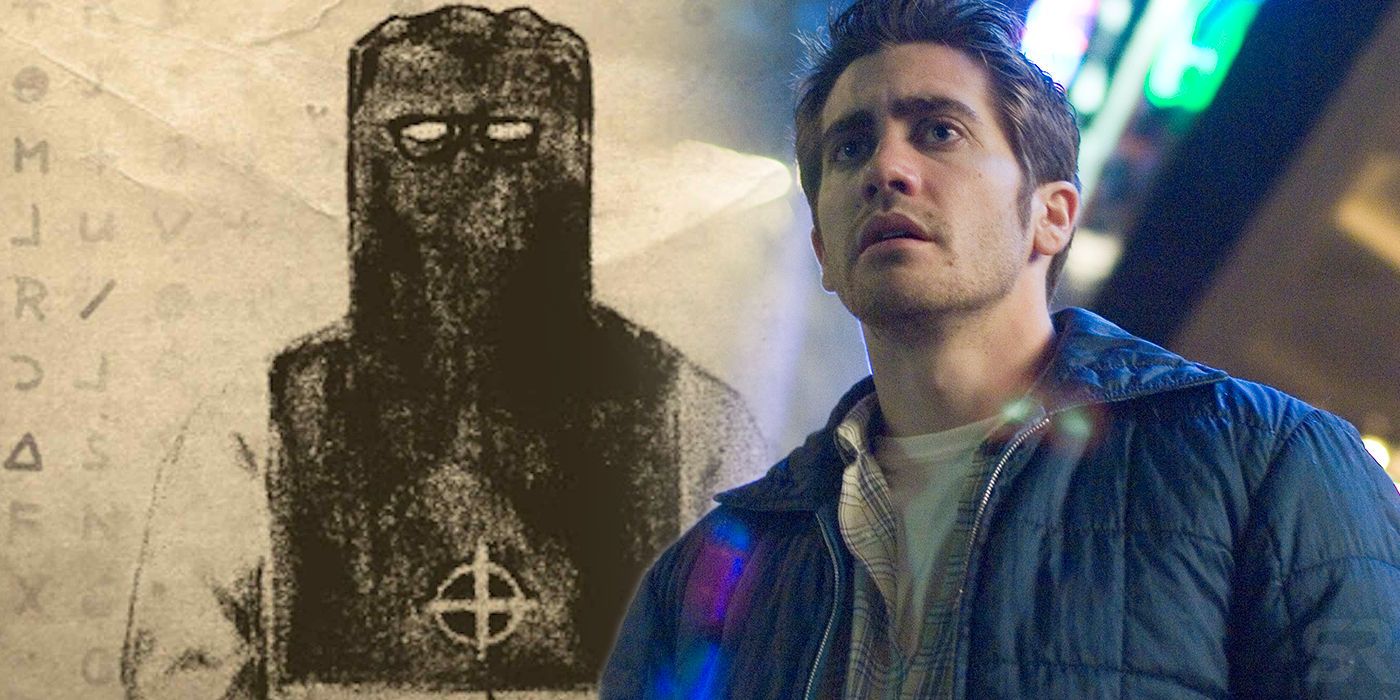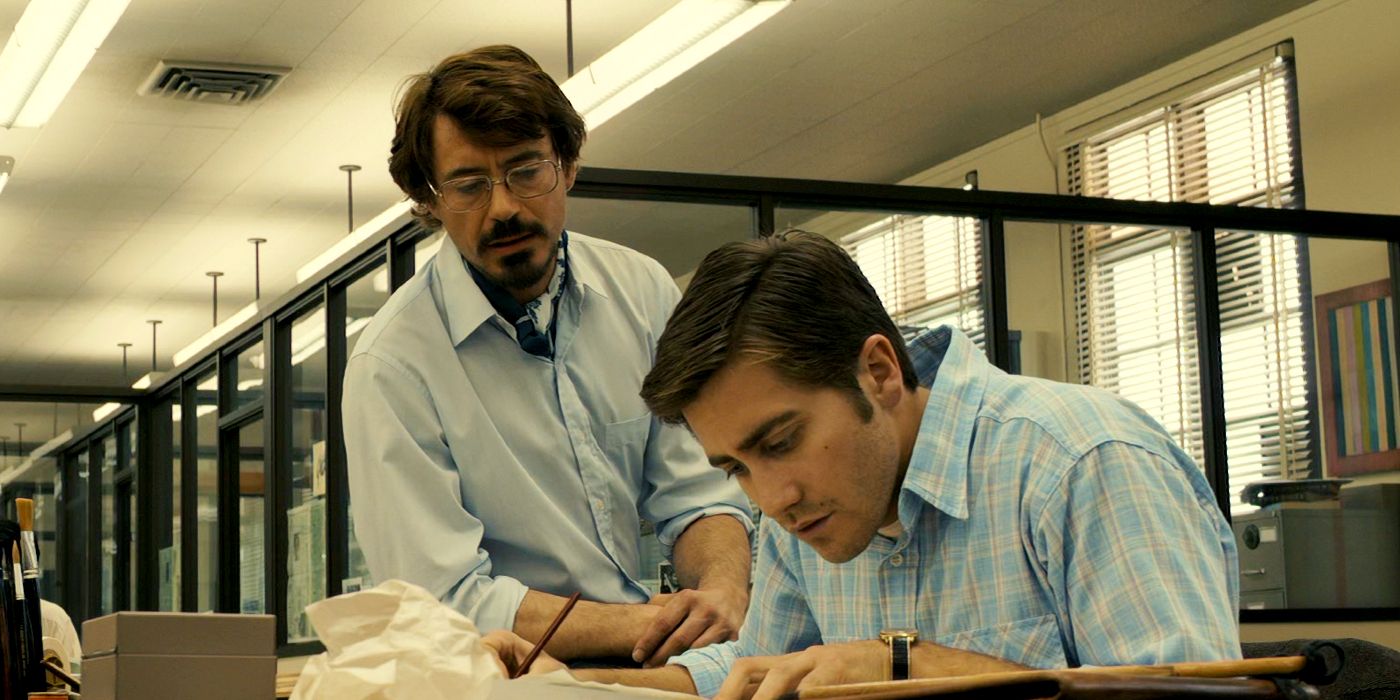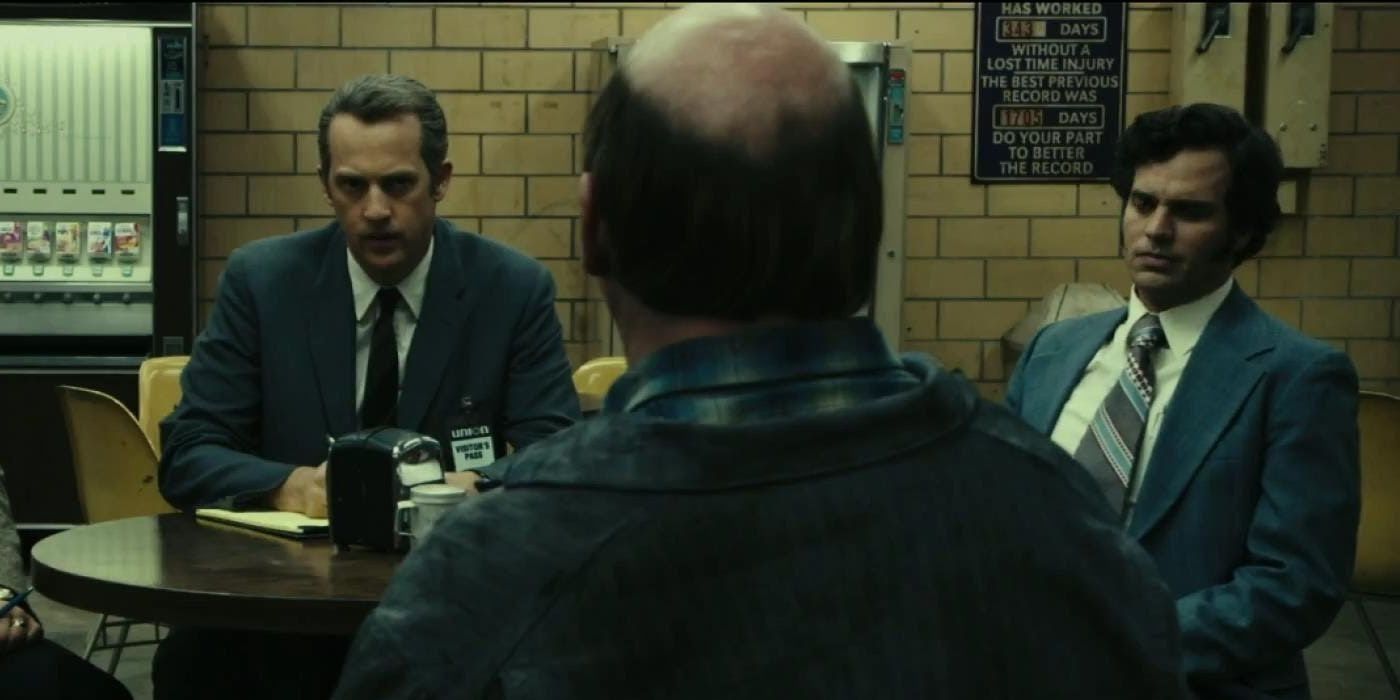As David Fincher's 2007 thrilling true story movie Zodiac notes, the identity of the real Zodiac Killer has been a decades-long mystery, so who was the murderer? Throughout the late 1960s and early 1970s, the residents of Northern California found themselves plagued by the threat of the mysterious Zodiac Killer. The unknown murderer killed five people, injured two others, and claimed to have 37 victims to his name. What made the story all the more terrifying was the fact that the killer sent taunting letters and cards to the local press, often through cryptograms that remain unsolved to this day.
Close to 50 years later and the identity of the Zodiac Killer remains one of the great unsolved mysteries of American crime. Endless books have been written on the subject and the case remains a favorite with amateur detectives and true crime aficionados. It also regularly pops up in various forms of pop culture, from casual jokes to deep-dive explorations to horror retellings of a story that is already horrific. The most notable of these is David Fincher’s 2007 mystery thriller Zodiac.
What made Zodiac so notable, other than its incredible direction and ensemble of actors, was its source material. The film used the work of Robert Graysmith as its basis to tell a familiar story from a new angle. Graysmith, who is played by Jake Gyllenhaal in the movie, was a political cartoonist for the San Francisco Chronicle at the time when the Zodiac Killer became prominent. He quickly, by his own admission, became obsessed with the case and dedicated years of his life to trying to solve it. Today, he is a full-time true-crime writer who has written books on a number of high-profile cases, such as the death of actor Bob Crane and the hunt for the Unabomer.
It is in Graysmith's book that the theory is posited of the Zodiac Killer being Arthur Leigh Allen, a conclusion the author came to, based on circumstantial evidence. Fincher's Zodiac certainly portrays him as a likely suspect (and a deeply scary person), but was that true? How much of the Zodiac's true story is portrayed correctly in the movie?
How Accurate Zodiac's Cast Is To The Real People
Zodiac has been celebrated by critics for its incredible attention to detail and the historical accuracy with which it tells its story, a trait that has defined Fincher as a director. This is particularly notable in its depiction of the individuals involved with the case. While Jake Gyllenhaal doesn’t look much like Robert Graysmith, he does capture the man’s obsessive focus on the Zodiac case and how it led to the disintegration of his marriage and relations with his children. The Zodiac movie even ends with a postscript noting that Graysmith’s relations with his kids nowadays are far better.
Zodiac is less accurate in regards to Paul Avery, as played by Robert Downey Jr. Avery was a celebrated journalist who, after the Zodiac case, would go on to cover the Patty Hearst kidnapping. In the movie, Graysmith is shown having a close collaborative relationship with him for the Zodiac case, which was untrue. Many of Avery's former friends and colleagues have taken umbrage with how Zodiac portrayed him as a man broken by his inability to crack the Zodiac case. Avery is shown drunk and abusing drugs and his career in ruins the last time Graysmith sees him, none of which was true. Avery’s career continued well into the 1990s until his retirement and he even wrote a book on the Hearst case.
Dave Toschi, the San Francisco Police detective who worked on the Zodiac case, was already a major pop culture influence before Fincher's movie. His personal style and prominence as an investigator at the time saw him become the basis for Steve McQueen's character in Bullitt and the eponymous Dirty Harry, a film whose own bad guy was inspired by the Zodiac Killer. (Fincher's Zodiac even shows Toschi - played by Mark Ruffalo - watching Dirty Harry in a theater and having trouble with it.)
The Zodiac movie shows Toschi as a dedicated detective and inspiration to Graysmith but one who was also haunted by the case. Toschi was famously demoted and taken off the Zodiac case after being accused of sending fake Zodiac letters. What Zodiac does not show is how Toschi also sent multiple anonymous letters to the famed writer Armistead Maupin, wherein he admired his own efforts as a detective. This had a bigger effect on the end of his career than the supposedly forged Zodiac letter (he was later exonerated of writing that letter but some experts disagreed with that verdict).
Everything Zodiac Gets Right About The True Story
Zodiac is one of the most accurate true crime movies ever made, not least of which is its depiction of San Francisco during the time of the Zodiac murders. The filmmakers compiled as extensive a report on the crimes and their surrounding investigation as was possible for a Hollywood production, getting access even to old police files. Aside from the aesthetic of the film, from recreating victims' clothing to the smoke-filled offices of the San Francisco Chronicle, Zodiac goes to great lengths to accurately depict what happened to the victims, including copying, beat-for-beat, what the Zodiac's attacks were like.
Bryan Hartnell, who survived being stabbed multiple times by the Zodiac Killer in an attack that killed his friend Cecelia Shepard, admitted that Fincher's recreation of that day was so spot on that he couldn't have scripted it better himself. The only incorrect detail was that the movie showed them as a romantic couple when they were just good friends. Other details the Zodiac movie gets right about the true story is the suspect, Arthur Leigh Allen, wearing a watch with the zodiac symbol on it; a police officer (Don Fouke) passing the Zodiac Killer without knowing it was him until later on (due to the original description being for a black male instead of a white male); and the Zodiac Killer mailing a piece of the taxi driver's shirt to the San Francisco Chronicle newspaper. Much of what is presented in Fincher's Zodiac movie is true to what happened in real life, with only minor details being changed or dramatized.
What Zodiac Leaves Out About What Happened
As with any film that dramatizes real-life events, Zodiac condenses and removes certain elements for cinematic effect. Paul Avery's arc is a good example of this, as well as the high-profile suspects investigated at the time who weren't Arthur Leigh Allen. What Zodiac is so good at, however, is in showing proper respect to the victims, the investigators, and the overall case that proved so gripping while also being highly misrepresented over the decades.
The condensing of these details account for those moments where the accuracy isn't complete. A scene featuring Ione Skye as Kathleen Johns shows the woman and her baby being picked up by a mysterious man in his car who then said he was going to kill them both. Johns escaped and later recognized the man from a composite sketch of the Zodiac killer on a Wanted poster. In a letter to the San Francisco Chronicle, the Zodiac claimed responsibility for these events. What is not depicted in Zodiac is that Johns's account of that evening's events varied between her telling it to police and recounting it for the San Francisco Chronicle. Doubts have been raised over the years as to whether the Johns attack was truly the work of the Zodiac Killer or if he was simply taking credit for another person’s work.
Was Arthur Leigh Allen The Zodiac Killer?
The man positioned as the most likely suspect in the Zodiac case by Fincher’s movie and Graysmith’s book is Arthur Leigh Allen. The extensive circumstantial evidence is shown in the movie, including his Zodiac brand watch which contained the symbol that appeared on each Zodiac letter. The Zodiac movie ends with Allen being identified as the killer by Mike Mageau, one of the survivors. Allen was a convicted child molester who served jail time for his crimes; he died in 1992 of heart and kidney failure related to diabetes. In 2002, a partial fingerprint was discovered on a stamp attached to one of the Zodiac Killer's letters, which included some DNA. The results of tests conducted on this DNA did not match Allen (via SF Weekly). Robert Graysmith was quick to note that the DNA was most likely compromised after 30+ years in storage.
Aside from Mageau's identification of Arthur Leigh Allen, the lion's share of evidence connecting Allen to the Zodiac case was circumstantial. More solid details such as DNA, fingerprints, and handwriting samples did not match him. While the Zodiac movie does note this, it is clear in the eyes of the narrative, as dictated by Graysmith's book, that Allen is the most likely culprit to these murders. To this day, the case remains unsolved. Various experts, amateur detectives, and true-crime reports have put forward other suspects, ranging from convicted murderer Edward Wayne Edwards to George Hodel, one of the prime suspects in the Black Dahlia murder, to Ted Kaczynski, the Unabomber. As Fincher’s Zodiac proved, it is a case that will continue to fascinate, infuriate, and terrify for decades to come.





